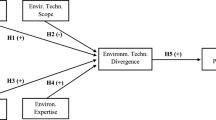Abstract
We consider optimal intellectual property (IP) policy when (1) firms embed ‘constellations’ of IP—patented, secret/non-patentable, and patentable-but-secret innovations—into products such as communication satellites operating in low Earth orbit and (2) an innovation may improve both product performance and ambient environmental quality. For instance, a materials science innovation by SpaceX that is shared via patent licensing could raise the technical performance of all satellites in low Earth orbit and at the same time reduce orbital debris. Traditional IP policy helps innovators monetize spillover technological benefits by combining patent licensing rights with the right of competitors to reverse engineer patentable-but-secret innovations. However, we show that when disclosure of an innovation also creates spillover environmental improvements, licensing policies that address only the technological knowledge spillover are inefficiently weak. We characterize the conditions under which private firms will hold secret more patentable innovations than are socially optimal. We then suggest implementable IP policies for jointly promoting technical innovation and environmental quality improvements.
Similar content being viewed by others
Notes
See, e.g., Bloom et al. (2013, 1349) who estimate that the socially optimal rate of R&D is over twice as high as the level of observed R&D in a panel of United States firms over the period 1981–2001.
Hall et al. (2014) review a wide range of traditional IP policies and empirical studies of their effectiveness.
We utilize the o and τ notation from Bloom et al. (2013).
In the US, said renewal fees are (as of September 1, 2023) $2000, $3760, and $7700, respectively, for ‘large’ entities (with lower fees for ‘small’ and ‘micro’ size entities). For full particulars, see https://www.uspto.gov/sites/default/files/documents/USPTO-fee-schedule_current.pdf.
Kremer (1998, 1145) writes “The Daguerreotype example indicates that buying patents may increase inventors’ incentive to patent discoveries, rather than relying on trade secrecy.”
On p. 29, they state: “For the group [of pharmaceuticals] as a whole, the replacement of patents with the intertemporal bounty led to welfare gains with a present value of $538 billion.”
References
Acemoglu, D., Akcigit, U., Hanley, D., Kerr, W.: Transition to clean technology. J. Polit. Econ. 124(1), 52–104 (2016)
Adilov, N., Alexander, P.J., Cunningham, B.M.: An economic ‘Kessler syndrome’: a dynamic model of earth orbit debris. Econ. Lett. 166, 79–82 (2018)
Adilov, N., Alexander, P.J., Cunningham, B.M.: The economics of satellite deorbiting performance bonds. Econ. Lett. 228, 111150 (2023)
Akcigit, U., Alp Celik, M., Greenwood, J.: Buy, keep, or sell: economic growth and the market for innovations. Econometrica 84(3), 943–984 (2016)
Amore, M.D., Bennedsen, M.: Corporate governance and green innovation. J. Environ. Econ. Manag. 75, 54–72 (2016)
Barbieri, N., Marzucchi, A., Rizzo, U.: Green technologies, interdependencies and policy. J. Environ. Econ. Manag. 118, 102791 (2023)
Bloom, N., Schankerman, M., Van Reenen, J.: Identifying technology spillovers and product market rivalry. Econometrica 81(4), 1347–1393 (2013)
Gerlagh, R., Kverndokk, S., Einar Rosendahl, K.: The optimal time path of clean energy R&D policy when patents have finite lifetime. J. Environ. Econ. Manag. 67(1), 2–19 (2014)
Grinols, E.L., Lin, H.C.: Patent replacement and welfare gains. J. Econ. Dyn. Control 35(9), 1586–1604 (2011)
Grzelka, Z., Wagner, J.: Managing satellite debris in low-Earth orbit: Incentivizing ex ante satellite quality and ex post take-back programs. Environ. Resour. Econ. 74, 319–336 (2019)
Hall, B., Helmers, C., Rogers, M., Sena, V.: The choice between formal and informal intellectual property: a review. J. Econ. Lit. 52(2), 375–423 (2014)
Jones, C.I., Tonetti, C.: Nonrivalry and the economics of data. Am. Econ. Rev. 110(9), 2819–2858 (2020)
Kremer, M.: Patent buyouts: a mechanism for encouraging innovation. Quart. J. Econ. 113(4), 1137–1167 (1998)
Langinier, C., Chaudhuri, A.R.: Green technology and patents in the presence of green consumers. J. Assoc. Environ. Resour. Econ. 7(1), 73–101 (2020)
Noailly, J., Smeets, R.: Directing technical change from fossil-fuel to renewable energy innovation: an application using firm-level patent data. J. Environ. Econ. Manag. 72, 15–37 (2015)
Rouillon, S.: A physico-economic model of low earth orbit management. Environ. Resour. Econ. 77, 695–723 (2020)
Silvernail, J.L.: Calibrating intellectual property and innovation in NewSpace. Tex. A. M. J. Prop. Law 6, 113–137 (2020)
Sim, K.: Optimal use of patents and trade secrets for complex innovations. Int. J. Ind. Organ. 79, 102788 (2021)
Acknowledgements
We appreciate encouragement and several helpful suggestions from the editor and from two anonymous referees; from participants at the Next Space 2021 European Symposium (particularly to symposium organizer Sébastien Rouillon); and from session participants at the New York State Economics Association 2021 meeting and at the Association of Environmental and Resource Economists 2022 meeting. An earlier version of this paper circulated with the title “The Economics of Waste Management with Intellectual Property Rights: The Case of Satellite Debris Mitigation in Low Earth Orbit.”
Author information
Authors and Affiliations
Corresponding author
Ethics declarations
Conflict of interest
Neither author is aware of any conflicts of interest and neither received financial support to prepare this manuscript.
Additional information
Publisher's Note
Springer Nature remains neutral with regard to jurisdictional claims in published maps and institutional affiliations.
Rights and permissions
Springer Nature or its licensor (e.g. a society or other partner) holds exclusive rights to this article under a publishing agreement with the author(s) or other rightsholder(s); author self-archiving of the accepted manuscript version of this article is solely governed by the terms of such publishing agreement and applicable law.
About this article
Cite this article
Wagner, J., Grzelka, Z. Constellation IP and environmental quality. Lett Spat Resour Sci 17, 7 (2024). https://doi.org/10.1007/s12076-024-00370-2
Received:
Accepted:
Published:
DOI: https://doi.org/10.1007/s12076-024-00370-2




